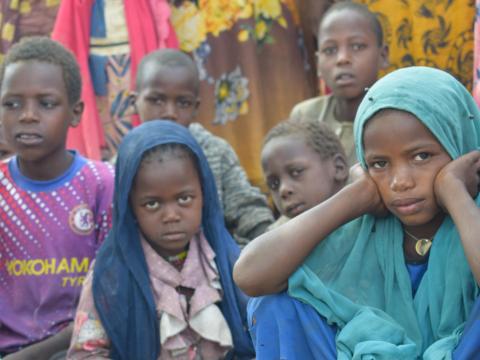A year of violence in Sudan threatens 24 million children with hunger, violence and lack of schooling

As the conflict in Sudan, reaches its one-year milestone, tens of millions of children and women continue to endure the worst violence imaginable.
Nineteen million children are out of school, most for many months, deprived of the psychological safety that comes from attending class. Millions have been displaced by the conflict that started on April 15, 2023, and are suffering extreme food shortages and a lack of health care. In the midst of their struggle to survive, children have suffered sexual violence, ethnic targeting, abduction, recruitment into armed groups and subjection to terror by men wielding weapons.
According to the UN Committee on the Rights of the Child, some 24 million children in Sudan are at risk of generational catastrophe.
John Makoni, National Director of World Vision Sudan warned: “Sudan is currently quite possibly the worst place in the world for a child to live, due to the huge numbers of boys and girls affected by the conflict, but also because of the full range of physical and emotional challenges they face. Children are literally being starved, abused, and traumatised by what they are experiencing and witnessing. Many, have fled the violence but have been unable to find any real safety.”
Makoni said World Vision is working to alleviate the ordeal faced by children by partnering with UNICEF to run safe spaces for children. These Child Friendly Spaces where boys and girls could feel protected, cared for and where they could recover some sense of normalcy in the midst of chaos.
One space is in Abu Ramad, in the Blue Nile region. Children there have been provided with volleyballs, basketballs, board games, art equipment, and skipping ropes. More than 100 girls and boys attend daily.
Mariam, 14, says she attends three times a week to play with friends. She dreams of being an engineer, and hopes to help construct schools and a hospital in her community.
Makoni said displaced women and girls face significant risks from sexual violence while living in temporary shelters, at border crossings, or while on the move to find safety. World Vision helps case manage those who have experienced violence, providing psychosocial services to more than thousands of women and girls.
And in Blue Nile World Vision is providing livelihood skills training to help women struggling to cope with their new situation find new ways of making money. Soap making, tailoring, and leather crafting are some of the skills they learn. Mother-of-four, Aisha*, said: “Since joining the centre, I’ve been able to create clothing for my children, saving money and contributing to our household income.”
World Vision says much more needs to be done to help the millions endure a crisis that is largely invisible to the world. Actions include:
- Ensuring cross-border access from South Sudan and Chad to reach people in need.
- Funding for humanitarian assistance for the thousands of internally displaced to be mobilized and made available as a matter of urgency by the international community or government. As of April 2024, only 5.4% of the US$2.6 billion 2024 Humanitarian Response Plan has been funded.
- A commitment from all sides to reopen schools to help protect children from violence and prevent the generational harm done to children who lack education.
*Name changed to protect privacy
About World Vision
World Vision is one of the largest humanitarian agencies active in Sudan, having worked in the country for 25 years. World Vision is also responding to the needs of people fleeing Sudan to the neighbouring countries of Chad, the Central African Republic, Ethiopia, Sudan and South Sudan. Over the past year, World Vision has reached more than 1.3 million people in our response to the Sudan crisis, most of them women and children, with emergency assistance, including programs focused on food security, child protection, health and nutrition, and water, sanitation, and hygiene.
For media inquiries, please contact: wvsudan_communications@wvi.org